Pipes for plumbing in the apartment: the selection criteria
To answer the question which water pipes are best to install in an apartment, you need to at least know what repairs are being made there - partial or capital ones, since today three types of material are used - steel, metal laminate and polypropylene.
If you need only a partial replacement, then in most cases it is best to use the material that has already been wired, but if this is a complete replacement, then, of course, it is best to stay on polypropylene (PPR).
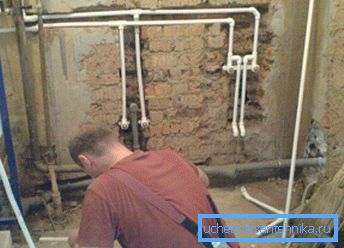
The latter option also has differences and is applied in accordance with the temperature regime of the pipeline, which is what will be discussed now, and besides, you can watch the video in this article in addition to everything said.
Polypropylene
Note. Polypropylene (PP or PPR) is obtained by polymerizing propylene, resulting in a material with a low density of 0.91 g / cm3 (the lowest value among plastics). The purpose of the pipes is indicated by the abbreviation PN, followed by the numbers that determine the ability of the walls to withstand pressure; these are PN10, PN16, PN20 and PN25. At the same time, it is a product with low abrasion, sufficient heat resistance and hardness, the melting point of which is 175? C.
Kinds of PPR pipes

- When you do your own hands when replacing water pipes in an apartment, they often choose a whole-walled pipe (without a reinforcing layer) PN20 or PN25 (the latter usually goes to the riser) for cold water supply. Despite the fact that the manufacturer provides an average warranty for 50 years, in cases where the pipe goes on top (not plastered), most craftsmen prefer the reinforced version of the PPR. The fact is that the solid wall (without foil or fiberglass) is sometimes no thicker than 2 mm, so there is a danger of mechanical damage.
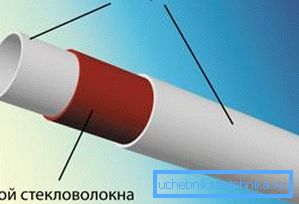
- The biggest cost of replacing water pipes in an apartment will be if you use PPR with fiberglass reinforcement - such pipes can withstand temperatures up to 150? C and are most often used for radiator heating. But this does not mean that the PP with a fiberglass layer can not be used for cold water supply or hot water supply - on the contrary, it will increase its mechanical strength. Although this will increase the price of the material.
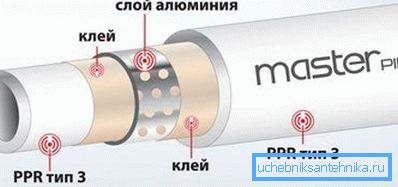
- If you ask which pipes are better for the plumbing in the apartment, then it is polypropylene with a reinforcing layer of aluminum foil (PN20 or PN25), in any case, this is statistics, and the masters prefer them most of all. The highest point of continuous heating of water PP with foil is 90? C, and for short-term heating - 100? C, but neither DHW nor heating are above these parameters. As a rule, the highest temperature of the liquid in such cases does not rise above 80-85? C, moreover, such a pipe has a solid wall and is successfully used as a cold one.
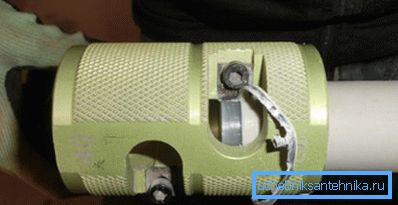
- But aluminum foil can be in the middle of the wall, and maybe even closer to the surface and in the second version, the hot nozzle will remove the PP layer, exposing the foil, and the fitting will dock with aluminum, rather than with a uniform mass, which will lower the quality of soldering of polypropylene pipes. Therefore, for stripping the bottom layer of PP from foil, a so-called shiver is used, as in the photo above (very similar to a pencil sharpener), but this soldering method takes extra time, to which the craftsmen reluctantly agree, preferring a pipe with central reinforcement.
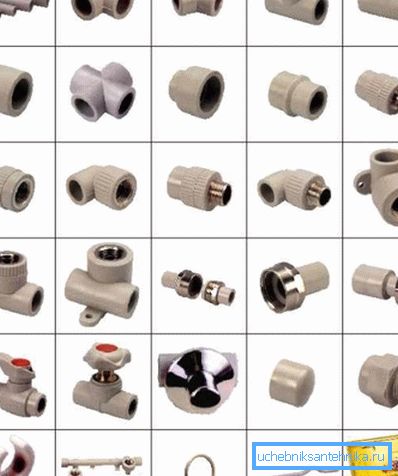
- If you have already decided which pipes to choose for the plumbing in the apartment, then according to them, you need to choose fittings as well, but in this case it is polypropylene.. Such elements can be passable - they are couplings, angles (32 ?, 45? And 90?), Reducing (for example, switching from PN25 to PN20) and end (solder caps). Also for PP used threaded fittings for access to the tap or American.
- In addition, if the replacement of plumbing pipes in an apartment is made of PPR, then all the taps, with the exception of mixers, should be embedded from the same material - their operating life is immeasurably higher than their metal counterparts. For the installation of intersections, for example, cold and hot water, special by-pass tubes are used, which are cut by means of couplings for connecting pipes, although such a circle can also be made with the help of angles.
Assembly work

Most likely, you will stop your choice on PP, since the service life of water pipes in an apartment made of this material is under the guarantee for at least 50 years, but in fact they have to withstand twice as much (neither steel nor metal-plastic will not survive as much).
Now you need to determine the type of wiring - internal or external. Internal laying involves shaving the wall (floor, ceiling), followed by plastering or filling of the pipeline, and outdoor - these are all other options, that is, when the pipe is fixed with brackets or clips.
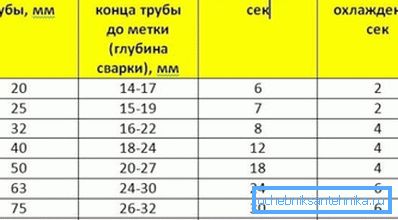
Pay attention to the table above - there you will see the soldering parameters and if you consider that the diameter of the pipes for the plumbing in the apartment is 20 mm, that is, PN20, then the retention of the elements on the hot nozzle should occur within 5-6 seconds, and after welding - 2-3 seconds, although it can be more. This is very important, since the material must melt well so that the PPR molecules from the two sides enter into adhesion and then fix in the correct position.

Please pay attention! The end of PN20 should be approximately 14-17 mm in the fitting (this is also indicated in the table), but there is no stopper on the fitting, and you will have to adjust the depth of fit with your own hands and for this it is best to put a mark on the tube with a pencil or marker. Pay attention to the fragment number 4 - there you see the correct joint in the section, that is, there are no influxes that reduce the permeability of the aqueduct. Such nodules necessarily form in cases where the depth of landing is increased.
Conclusion
By and large, it’s up to you to decide which pipes to use for plumbing in your apartment - from steel, metal or propylene, but the latter option will still be the most acceptable in terms of the number of positive parameters. Moreover, welding work with such material is very easy and does not require special training. Good luck!